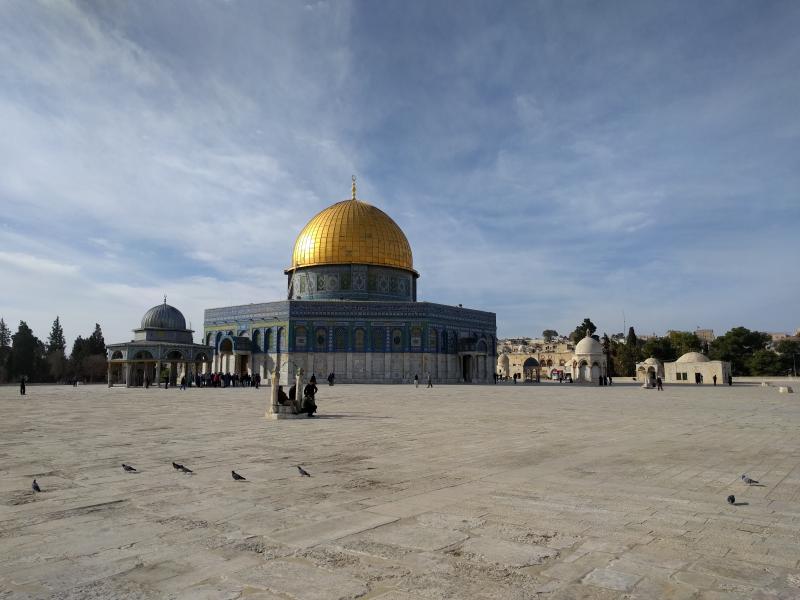Gadara’s Octagonal Martyrium
Ruins of the octagonal sixth-century Byzantine martyrium
Nestled on a plateau in the northwestern corner of Jordan lay the ruins of the ancient city of Gadara. From this vantage point, just beyond the sleepy town of Umm Qays, you have a spectacular view of the Sea of Galilee (Lake Tiberias) and the Israeli-occupied Syrian Golan Heights. Like many other places in the region, Gadara appeared on the historical record after Alexander the Great’s conquest of the Near East in 333 BCE.1 The city seems to have been mostly destroyed and subsequently abandoned after an earthquake in the eighth century.
Nevertheless, architectural remnants from the Late Antique period can now be seen thanks to excavation work done by Jordanian and German archaeologists after the site was re-discovered in the early twentieth century. Of all the ruins now unearthed, the octagonal martyrium is one of the most significant. About the large terrace where the martyrium is currently found, researchers2 say it was completely remodeled from a Roman forum basilica into a Byzantine ecclesiastical compound, with a centralized church, a basilica, and courtyards in the sixth century CE. Martyria such as this were once extremely common in the eastern Mediterranean, though few are still standing today. They were typically used to commemorate a person, a divinity, or an event.3

A martyrium plan remarkably similar to Gadara’s
The significance of Gadara’s octagonal martyrium is the remarkable similarity of its plan to another prominent (although later) building less than 100 kilometers away in Jerusalem: the Dome of the Rock. Umayyad caliph ʿAbd al-Malik built the Dome of the Rock near the end of the seventh century and it is one of the first — and finest — Islamic monuments in existence. It has a central octagonal plan, a vaulted dome, and an altar featuring a rock (a stone-lined tomb in the case of Gadara1), which suggests a commemorative purpose for the building.4 It is unclear what this building meant to people living in the seventh century, but there is no doubt that an architectural language that was extremely common in the Mediterranean basin in the Late Antique period influenced its construction.3
There is much more to see at Umm Qays if you have time. Entrance fees for the site are included in the Jordan Pass. I recommend visiting for a few hours in the morning and then staying for lunch at the Romero Group’s restaurant to enjoy the view and the ambiance.
-
Amal. (n.d.). The Archaeology of Umm Qais: Historical Studies: Jordan Tours. Retrieved April 18, 2020, from https://www.jordangrouptours.com/historical-studies/the-archaeology-of-umm-qais ↩︎ ↩︎
-
Vriezen, K., Wagner-Lux, U. and Dijkstra, J., 2015. Gadara - Umm Qēs II: The Twin Churches on the Roman-Byzantine Terrace and Excavations in the Streets. Wiesbaden: Harrassowitz. ↩︎
-
Grabar, O. (2006). The Dome of the Rock. Cambridge, MA: Belknap Press of Harvard University Press. ↩︎ ↩︎
-
Donner, F. M. (2010). Muhammad and the Believers: At the Origins of Islam. Harvard University Press. ↩︎